China is a perfect travel destination for seniors with so many different landscapes and cultures to see and to discover. People are never too old to go on a trip! No matter whether you are over 70 or 80, it’s never too late to discover this fantastic country. You could enjoy this 12-day China tour for seniors, which was customized to meet your needs with senior-loved leisure arrangements at your pace. We also arranged centrally located and senior friendly hotels, experienced and considerate guide service for this best China tour for seniors. All essence attractionsare included in this China best tour for seniors. Such as the Forbidden City and Great Wall in Beijing, Li River cruise in Guilin, West Lake boat tour in Hangzhou and the Bund in Shanghai. Contact us now, your senior adventure is a click away!

Welcome to Beijing! When you get off the plane, you will see your tour guide holding a pick-up card with your name on it and waiting for you at the exit with a smile. It is about 25 kilometers from the airport to the city center, less than an hour’s drive. We will take you to the hotel, and after checking in, you can have a good rest and get ready for the journey tomorrow.
After breakfast, we will first go to Tian’anmen Square. Tian’anmen Gate Tower is located in the center of Beijing, on the south side of the Forbidden City, across the street from Tian’anmen Square. It is the main gate of the royal palace of the Ming (1368-1644) and Qing (1636-1912) Dynasties. On October 1, 1949, the founding ceremony of the People’s Republic of China was held here, and Tian’anmen Square has since become the symbol of China. In the south of Tian’anmen Square is Chairman Mao Zedong Memorial Hall. It is a memorial hall for the older generation of proletarian revolutionaries headed by Mao Zedong (first chairman of the PRC), where the body of Mao Zedong is placed, and it is also a national patriotism education base. In the center of Tian’anmen Square stands the Monument to the People’s Heroes. Carved on the monument are several classic battles that the Chinese people have gone through since 1840 to fight against internal and external enemies and strive for national independence and freedom. You must be shocked by the vivid relief.
Then we will go to the Forbidden City (closed each Monday). The Forbidden City (or the Palace Museum) is the largest ancient palace complex, representing the highest level of Chinese traditional culture and aesthetics. There are many cultural relics in the Forbidden City, collected in several halls according to the types of cultural relics. Among them, the Hall of Clocks and Watches, and the Treasure Hall are the most attractive. The clocks and watches on display in the museum were mainly made by Britain, France, and Switzerland, among which the most exquisite ones were from Britain. It is so hard to imagine that the mechanisms are controlled only by clockwork and gears. After visiting the Hall of Clocks and Watches, you can go south to the Treasure Hall. It is a place for an exhibition of rare collections, mainly displaying the palace cultural relics of the Qing Dynasty, including ritual vessels, sacrificial vessels, crowns and clothes, decorations, daily necessities, and exquisite furnishings in the palace. Going out from the Treasure Hall, you can turn back to visit the Six Eastern Palaces. There is a particularly long path with high red palace walls on both sides, which is especially suitable for taking photos.
After lunch, we will visit the Summer Palace. The Summer Palace was first built in 1750 when Emperor Qianlong celebrated the 60th birthday of his mother. It is the world’s most complete royal garden with rich scenery and concentrated buildings.The buildings of different styles are not only self-contained but also interrelated. The scene outside the garden is integrated with the lake and mountain inside, and the artificial architecture is harmoniously integrated with the natural scene, so it can be called a model of Chinese garden art. Boating on the lake is a popular activity among visitors and they can see the reeds on both sides swaying in the wind, willows dancing with the wind, and waterfowls flocking on the lake as if welcoming guests from afar. In spring, winter jasmines, peach blossoms, magnolias are in full bloom, pleasing to the eye. Among the many scenic spots in the Summer Palace, there is a 700-meter-long corridor, the Long Corridor, known as the world’s No. 1 corridor. It is famous for its exquisite architecture, twists and turns, and colorful paintings. There are more than 8000 colored paintings on the beams of the corridor. The contents of the colored paintings are mainly about landscapes, flowers, birds, and the plots of the four famous Chinese classics. So, it is a good place for you to better understand Chinese culture.
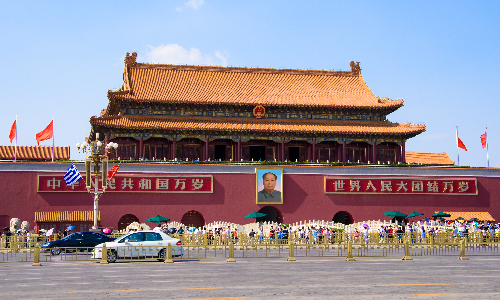
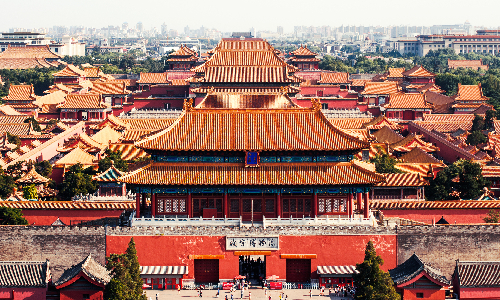
After breakfast, your guide will take you to the Ming Tombs. As a world cultural heritage, the Ming Tombs is the general name of the tombs of 13 emperors of the Ming Dynastyafter the capital was moved to Beijing. It is about 50 kilometers away from the city, or an hour’s drive. The Chang Tomb we are going to visit is the co-burial mausoleum of Zhu Di, the third emperor of the Ming Dynasty, and his empress Xu. It is also the largest tomb among the Ming Tombs with the earliest construction and the best-preserved ground structure. What is breathtaking is that all the wooden parts of the main hall are made of the precious Phoebezhennan (nanmu), and they are magnificent and unparalleled in the world. There is a bronze statue of Emperor Zhu Di sitting on the throne in Ling’en Palace. This statue is a masterpiece of art in history.
After lunch, we will drive for about an hour to the Mutianyu Great Wall, approximately 45 kilometers away from Chang Tombs. The Great Wall is an ancient defense project with the longest construction time and the largest engineering quantity in China and the world. Of all the great walls in China, the Mutianyu Great Wall is the longest. It has hosted more than 70 international dignitaries, including former British Prime Minister John Major, former US President Clinton, former German Chancellor Schroeder, and former US First Lady Michelle Obama. If you choose to walk up the mountain, you need to walk more than 700 steps, equivalent to 50 floors, which may make you tired. Therefore, we recommend you choose the round-way cable car, which will save you a lot of energy. In addition, you can also choose the Speed Slide, also known as a dry land sled. With a total length of 1,580 meters, the slide gives you the feeling of flying close to the ground and driving at a high speed. It is safe, comfortable, and suitable for all ages.
On the way back to the city from the Mutianyu Great Wall, we will pass Bird’s Nest and Water Cube. Bird’s Nest, or the National Stadium, is located in the south of the central area of Beijing Olympic Park. It is the main stadium of the 2008 Beijing Olympic Games and can accommodate 91,000 spectators. The main body of Bird’s Nest is a “bird’s nest” shape woven by a series of steel trusses around the bowl-shaped seating area. The structure is novel and unique, with great visual impact, fully reflecting the beauty of natural harmony. Located opposite Bird’s Nest is Water Cube, or the National Aquatics Center. It is the main swimming pool of the 2008 Olympic Games. The shape of Water Cube is very peculiar. The outer wall is composed of more than 3,000 irregular air cushions, which look like water molecules in the blue sea from a distance. We will stop here for you to take pictures with Water Cube and Bird’s Nest.
Option:
In the evening, you can watch Peking Opera in Liyuan Theater. Liyuan Theater is the first teahouse-style theater in Beijing. Like visiting the Forbidden City and eating roast duck, coming here to watch Peking Opera is a special experience that you should not miss when you are in Beijing. Many state leaders including former South Korea President Kim Dae Jung, former Japanese Prime Minister ToshikiKaibe, and Estonian President Lennart Meri have all enjoyed the performances in Liyuan Theater. You can taste all kinds of Beijing snacks and tea while enjoying the opera show. In the exhibition hall of the theater, there is a display of the history of Peking Opera for more than 200 years. In the hall, you can also buy some crafts and souvenirs, and you can also wear opera costumes to take pictures or draw face masks.
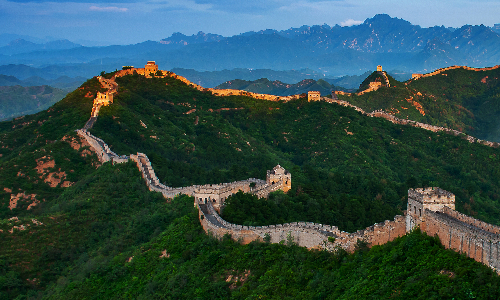
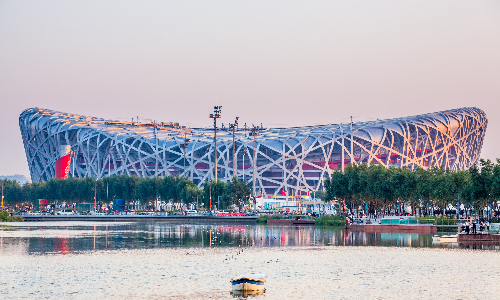
 Guilin
Guilin You can take a break in the hotel or stroll around, try the traditional breakfast of Beijing, or take a walk in Hutongs to experience the history of Beijing. Your guide will take you to the airport to take the estimated flight CA8621 12:40/15:20 to Guilin.
Guilin is a world-famous scenic city and a famous historical and cultural city in China. It is the political, economic, cultural, scientific, and technological center of Northeast Guangxi. When you get off the plane, your local guide in Guilin will pick you up and take you to the hotel. The airport is about 30 kilometers away from the city center. After about half an hour’s drive, you will arrive at the hotel.
In the morning, we will first come to Reed Flute Cave. Known as the “Palace of Nature”, Reed Flute Cave is a scenic spot mainly for visiting caves and supplemented by viewing the landscape and pastoral scenery. It is a shining pearl of Guilin’s landscape. Reed Flute Cave is 240 meters deep and has a travel distance of nearly 500 meters. In the cave, there are a wide variety of stalactites, stalagmites, stone pillars, stone curtains, and stone flowers. They are lifelike and form more than 30 wonderful landscapes, including “Dome Mosquito Net”, “Flying Waterfall”, “Panlong (dragon) Pagoda”, “Primeval Forest”, and “Crystal Palace”. They are closely related to each other. The whole cave is like a grand and magnificent underground palace carved with gems, corals, and emeralds. The uncanny craftsmanship of nature has created a great scenic spot with highly concentrated scenery and extremely beautiful scenery. Reed Flute Cave has received dozens of foreign heads of state and politicians, including former US President Nixon, former German President Richard von Weitzeck, former UN Secretary-General De Cuellar, former Canadian Prime Minister Trudeau, and Austrian Federal Assembly Speaker Hasselbach. After their visits, they were all overwhelmed by this wonder.
Next, we will go to Ronghu Lake and Shanhu Lake. Ronghu Lake and Shanhu Lake have been interconnected since ancient times, just like twin sisters. They are connected by Yangqiao Bridge, with Shanhu Lake in the east and Ronghu Lake in the west. The most beautiful scenery ofShanhu Lake is the Sun and Moon Twin Pagodas, which were reconstructed based on the pagodas in the Tang Dynasty (618-907). The copper Sun Pagoda is located in the center of the lake, with a height of 41 meters and a total of 9 floors, while the Moon Pagoda is a glazed pagoda with a height of 35 meters and a total of 7 floors. All the components of the copper pagoda, such as tile surface, angles, door arches, doors, and windows are all made of steel and decorated with exquisite copper murals. There is a Big Dipper Bridge on Ronghu Lake, which is built based on the Big Dipper in the sky. The railings of the bridge are all made of high-grade white marble. It is the longest white marble bridge in Guangxi at present. The whole bridge is beautiful in shapeand exquisite in workmanship.
After lunch, we will visit Elephant Trunk Hill. Elephant Trunk Hill is located at the confluence of the Li River and the Taohua River in the center of Guilin. It resembles a giant elephant with its truck sticking into the Li River for drinking. Between the elephant trunk and its legs is a round hole of about 150 square meters. The river runs through the hole, like the moon floating on the water. There are many moving stories about Elephant Trunk Hill. According to a legend, Elephant Trunk Hill is transformed from the God elephant in the sky. It used to be a mount for the God, carrying a treasure bottle for the God. One year, the God elephant went out to fight with the God. The war was so fierce that the God elephant was also wounded to protect the god. The Godelephant lost touch with the God in the battle and fell ill in Guilin due to excessive fatigue. Under the care of the local people, the elephant slowly recovered and settled down to help the local people plow the fields and control the water. Over time, it turned into this magnificent Elephant Trunk Hill.
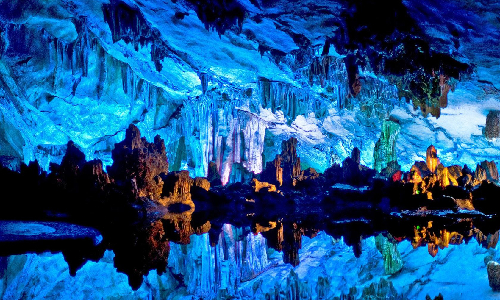
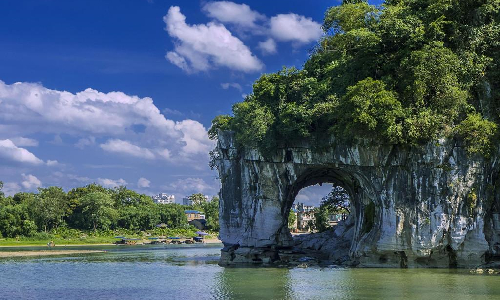
 Yangshuo
Yangshuo Guilin
Guilin After breakfast, we set off for Yangshuo by Li River Cruise, and the whole journey is about four hours. The Li River is a typical section of karst terrain, known as a 100-mile gallery. The mountains on both sides of the Li River, with various shapes, are the essence of Guilin’s scenery. The Li River has a variety of views in different weather, with the reflection of green mountains on a sunny day, the mountains surrounded by clouds on a cloudy day, and the misty view on a rainy day. The most representative landscapes of the Li River are the Nine Horse Painting Mountains and the Reflection of the Yellow Cloth. The back of the new version of RMB 20 refers to the landscape of the latter. On the cruise, you can see mountains undulating on both sides of the Li River, forming vivid and interesting pictures. The mountains on both sides of the river are covered with shrubs. On the banks of the dams, there are evergreen phoenix-tailed bamboos, like a girl’s skirt dancing in the wind. The cruise ship moves slowly, and you will enjoy the scenery while having lunch on the ship.
In the afternoon, we will come to Yangshuo West Street. With a history of more than 1,400 years, West Street is the oldest bustling street and one of the most important tourist attractions in Yangshuo. West Street boasts a collection of food, shops, bars, and other elements, making it a unique and beautiful scenery in Yangshuo. The street is, less than one kilometer, in a curved S-shape, with black tiles, white walls, and pointed roofs. The whole street is simple and elegant, with rich local characteristics. You can taste local snacks and delicious food, and buy ethnic handicrafts and souvenirs. The shops on both sides are a combination of Chinese and Western styles. Almost all the signs are both in Chinese and English. The waiters can serve tourists in fluent foreign languages. When you come to West Street, you must taste Beer Fish, the most famous dish in Yangshuo. There are also many bars here, making the street livelier at night than in the day.
After visiting, we will drive back to the hotel in Guilin overnight.
Option:
In the evening, you can go to watch “Impression Sanjie Liu”. “Impression Sanjie Liu” is an epic work directed by Zhang Yimou, a famous Chinese director.The show is played in the world’s largest landscape live theater, composed of two kilometers of Li waters, 12 mountains as background, and a vast sky. It integrates Sanjie Liu’s classic folk songs, ethnic customs, Li River fishing fire, and other elements into the landscape seamlessly. The show successfully interprets the harmonious relationship between man and nature, giving people a visual impact and an emotional touch.
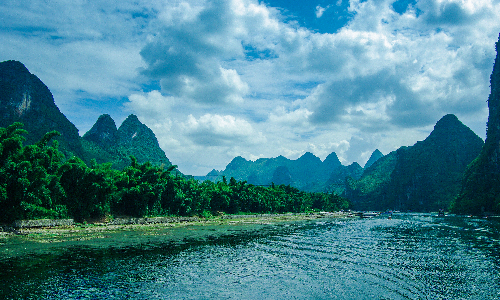
 Hangzhou
Hangzhou Today we are going to say goodbye to Guilin. Your guide will send you to the airport for the estimated flight SC4646 13:15/15:05 to Hangzhou. After getting off the plane, your Hangzhou guide will pick you up at the exit and head to the hotel. The airport is about 40 kilometers from the city center. After less than an hour’s drive, you will get to your hotel for check-in.
Welcome to Hangzhou! Hangzhou’s history can be traced back to more than 2,000 years ago, the Qin Dynasty (221 BC-207 BC), and it is one of the seven ancient capitals of China. Because of its beautiful scenery, Hangzhou has been known as a “paradise on earth” since ancient times. Hangzhou’s most famous attraction, West Lake, is included in the World Heritage List. Along West Lake, there is no absolute boundary between the city and parks. Hangzhou is surrounded by the greenery of nature, but there is no sense of emptiness far away from the city.
After breakfast, we will start a cruise on West Lake. When visiting Hangzhou, West Lake is a must-see attraction. West Lake is surrounded by mountains in the south, west, and north. The Bai Causeway, Su Causeway, Yang Gong Causeway, and Zhao Gong Causeway divide the lake into several water areas. Among them, Su Causeway is the only channel that runs through the north and south of West Lake, so you can see the whole water area of West Lake on Su Causeway, which is the best place to enjoy West Lake. West Lake is suitable for a visit in every season. You can enjoy the peach blossoms in spring, weeping willows on both sides in summer, osmanthus fragrance in the wind in autumn, and snow on the lake in winter. Especially in spring, beautiful flowers bloom on both sides of Su Causeway, together with the green willow trees and the water of West Lake, which is the perfect interpretation of spring in regions south of the Yangtze River. And in autumn, the leaves on both sides of West Lake turn yellow, and the residual lotus in the lake has a distinctive flavor.
After lunch, we will first come to Six Harmonies Pagoda. Six Harmonies Pagoda is located in the south of the West Lake and is one of the most intact ancient pagodas with brick and wood structure in China. From the outside, you will find that the nearly 60-meter-high ancient pagoda has 13 floors, but in fact, there are only seven floors inside. This structure is very unique. You can enter and try to climb the tower, and the stairs become narrower as you go up. You can see the scenery on each floor. Looking into the distance from different heights, the scenery is different. Ascending to the top of the tower, you can see the billowing Qiantang River in front of you. The Qiantang River Bridge spans across the two banks, with a panoramic view of the buildings and greenery on both sides. Six Harmonies Pagoda has been a favorite place for literati to compose poems since ancient times.
Next, we will go to Hangzhou Dragon Well Tea Plantation. Dragon-well Tea is one of the symbols of Hangzhou, and it is a material and cultural relic in Hangzhou and even China with profound historical and cultural heritage. In this tea plantation, you can see the scattered tea trees covering the entire hillside, which is both spectacular and full of charm. The green tea fields are all over the mountains and plains, with which you can take beautiful photos. The stream is gurgling by the tea plantation, and occasionally you can see several petals floating into the stream and disappear in an instant. The mountain stream is quiet, sometimes the tired birds fly back, and the murmuring sound of water is full of energy. No matter how restless you are, you can calm down here. Taking a deep breath, the clear and sweet air seems to be filled with the fragrance of tea. The eyes are full of different shades of green, like a sea of green. Walking on the tea plantation is also a pleasure. The ground is covered with dead leaves, and when you step on, it is soft and rustling.
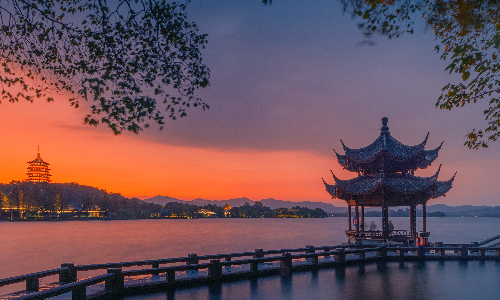
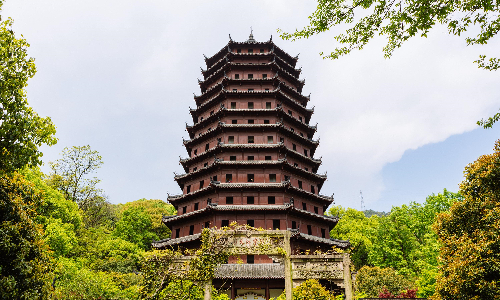
 Suzhou
Suzhou After breakfast, we will drive 160 kilometers to Suzhou, which takes about three hours.
Our first destination in the afternoon is the Humble Administrator’s Garden. The Humble Administrator’s Garden is the largest representative work of classical gardens in Suzhou. Together with the Summer Palace in Beijing, the Mountain Resort of Chengde, and the Lingering Garden in Suzhou, it is known as one of the four famous gardens in China. The garden is centered on water and surrounded by rockeries and trees. The design of the entire garden is very unique, and it can be said to be a “one step one scene” when visiting, which embodies the charm of the south of the Yangtze River. From a series of porches and stone walls with hollow patterns to every pavilion and every window different from each other, they are matched with the trees and flowers just right to form a picturesque scenery. The southern part of the garden is the traditional architectural pattern of the south of the Yangtze River, and there is the only garden museum in China, Suzhou Garden Museum. You can have a better understanding of Suzhou gardens after visiting the garden museum.
Then we will go to Suzhou Silk Museum (closed each Monday). Suzhou is not only a city of gardens but also the home of silk. The overall color of Suzhou Silk Museum is white, reflecting the color of silk. The wall has a twist at the entrance, symbolizing the softness and elegance of silk, with a circular hollow in the middle, just like a stretch of the ancient city wall on the Silk Road. You can get a lot of knowledge about silkworms, silk, sericulture, and weaving in the museum, and you can see specimens of silkworms at different growth stages and machines used to peel silk from cocoons. Suzhou Silk Museum grasps the historical connection between the ancient Silk Road and the modern Silk City of Suzhou and reflects the open consciousness of cultural exchanges between the East and the West.
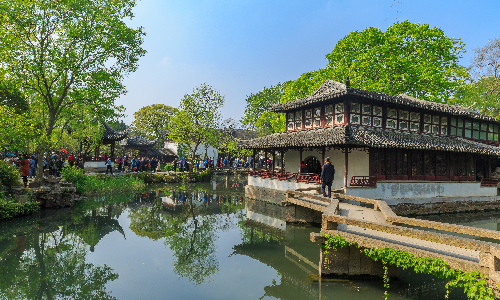
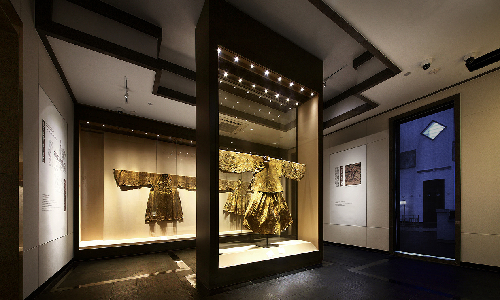
 Shanghai
Shanghai In the morning, we will drive for about 100 kilometers to Shanghai, which takes about 2.5 hours. When we reach Shanghai, we will first go to Oriental Pearl TV Tower. It is one of Shanghai’s iconic cultural landscapes and is about 468 meters high. On the first floor is Shanghai History Museum. There are hundreds of precious historical relics, hundreds of scaled-down magnificent buildings, 117 life-size wax statues, as well as nearly a thousand small wax statues and clay figurines in the exhibition hall, which deeply describe the whole historical process of Shanghai. At 259 meters is a suspended transparent sightseeing corridor. Through the transparent glass under your feet, you can overlook the panoramic view of both sides of the Huangpu River and have the feeling of walking in the clouds.
We will have lunch at a local restaurant on the way to the Bund.
Then, we will go to the Bund. The Bund is located on the bank of the Huangpu River in Huangpu District of central Shanghai. It is one of the most symbolic scenic spots in Shanghai. With a total length of 1.5 kilometers from north to south, there are 52 foreign buildings with different styles along the Bund. Therefore, the Bund is also known as the building complex of all nations. At the Bund you can see huge ships shuttling on the river. On the other side of the river, there are skyscrapers such as Jinmao Tower and the World Financial Center.
Leaving the Bund, we will go to Nanjing Road. Nanjing Road is the first commercial street established after the opening of Shanghai, with a history of more than 100 years. This is a gathering place for department stores, with a complete range of goods. If you like shopping, Nanjing Road is your paradise. In addition to shopping, there are also many snack bars, where you can eat anything you want. Creative urban sculptures can be seen everywhere. A large number of benches in the middle of the pedestrian street are provided for tourists to have a rest.
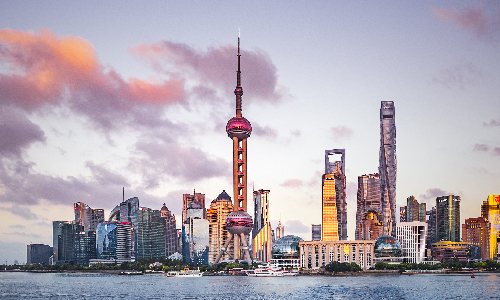
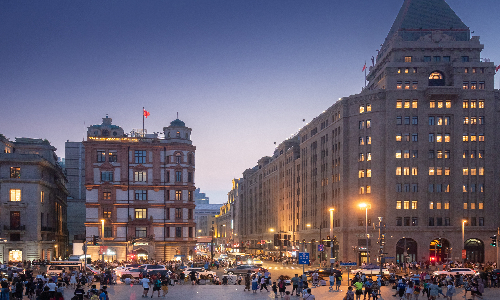
We will first go to Shanghai Museum (closed each Monday) in the morning. Shanghai Museum is a large-scale museum of ancient Chinese art, with 12 special exhibition halls and more than 120,000 collections. The Bronze Hall is the proudest exhibition hall of the Shanghai Museum. The broadness of the collection, the level of exhibition, and the depth of research are all ranked first in China. More than 400 exquisite bronzes are displayed according to the development period, recording the history of the birth, development, prosperity, and innovation of ancient Chinese bronzes. The Painting Hall and the Calligraphy Hall gather the authentic works of famous artists from the Tang Dynasty (618-907) to the Qing Dynasty (1636-1912). Shanghai Museum not only shows the long history of Chinese civilization but also shows the profound heritage of Chinese civilization.
Then we will go to Yu Garden (closed each Monday). Yu Garden was originally a private garden in the Ming Dynasty (1368-1644) and has a history of more than 450 years. Yu Garden covers an area of 2 hectares, with varied pavilions, rockeries of different shapes, and verdant trees. It is known for its quietness, beauty, and exquisiteness, reflecting the artistic style of the garden architecture of the south of the Yangtze River in the Ming and Qing Dynasties. The environment here is peaceful and silent, which is a rare quaint place in a prosperous city.
After lunch, we will go to Jade Buddha Temple. The temple is famous for the collections of one sitting Buddha and one reclining Buddha, both made of jade. Hence the temple was named Jade Buddha Temple. Built in 1918, the temple is a structure imitating the palaces of the Song Dynasty (960-1279) with a rigorous layout and harmonious structure. On the central axis of the temple, there is the Hall of the Heavenly Kings, the Grand Hall, and the abbot’s quarters. On the left and right sides are the well-arranged Reclining Buddha Hall, the Guanyin Hall, the Bronze Buddha Hall, and the Monastic Dining Hall. On the first and fifteenth day of the lunar new year or traditional Buddhist festivals, believers come one after another.
Next, we are going to Tianzifang Market. Tianzifang Market is one of the most literary and artistic places, evolving from the most characteristic Shikumen (or “stone gate”) in Shanghai. While you are walking in Tianzifang Market and winding through the labyrinth of alleys, characteristic shops and art workshops will inadvertently jump into your sight. From teahouses, open-air restaurants, cafes, galleries, home furnishing shops to handicrafts, all kinds of cultures collide here, full of cultural and artistic atmosphere. There are also many pubs here, and you can have a drink in the evening.
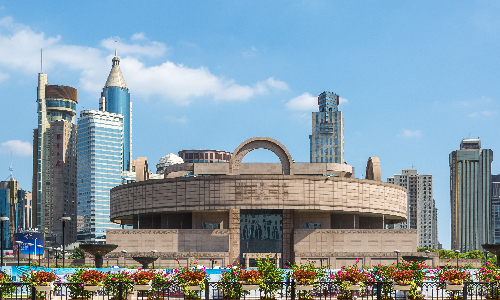
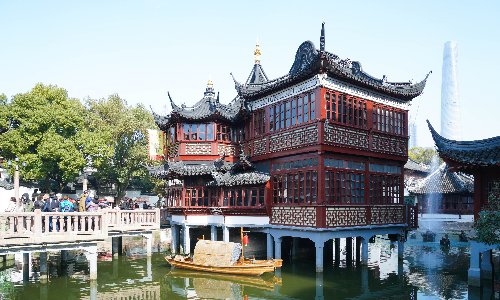
Today we will say goodbye to Shanghai. Your guide will take you to the airport according to your flight. Hope to see you again in other cities in China!
Author: Wang Qian
Proofreader: Lexie Jia
| City | Five Star hotel list | Four Star hotel list |
|---|---|---|
| Beijing | Sunworld Dynasty Hotel Beijing Wangfujing | Sunworld Hotel Wangfujing |
| Guilin | Lijiang Waterfall Hotel | Guilin Bravo Hotel |
| Hangzhou | Landison Plaza Hotel | Best Western Plus Meiyuan Hotel Hangzhou |
| Suzhou | Grand Trustel Aster Hotel Suzhou | Suzhou Jasmine Hotel |
| Shanghai | Ocean Hotel Shanghai | Ambassador Hotel |
 |
![]() About your child or infant, please contact us for a discounted price.
About your child or infant, please contact us for a discounted price.



We started with a few days in Beijing & ended in Shanghai, from where we visited the Forbidden City and Great Wall. In between we visited Terra Cotta Warriors Museum, Panda Base, Shanghai Disneyland.

We had a wonderful holiday in China which will remain long in the memory. China is a breathtakingly beautiful country full of splendid temples and palaces, mountains and rivers, peaceful rural scenes and bustling shopping streets.
 QUICK ENQUIRY
QUICK ENQUIRY